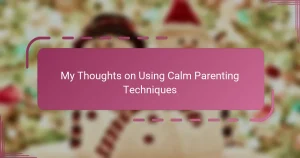Key takeaways
- Calm down corners provide children a safe space to recognize and manage their emotions, promoting emotional self-regulation.
- These corners enhance a child’s independence by allowing them to learn self-soothing techniques and practice calming routines.
- Including comforting items and engaging activities, such as coloring and breathing exercises, makes the corners effective emotional support tools.
- Personalizing the calm down corner fosters a sense of ownership and connection, adapting to the child’s evolving emotional needs.

Understanding Calm Down Corners
Calm down corners are simple, dedicated spaces where children can retreat to collect their thoughts and emotions. From my experience, these corners become little sanctuaries that offer kids a safe way to regain control when feelings run high. Have you ever noticed how a change of environment can instantly shift your mood? That’s exactly what a calm down corner aims to do for children.
I remember when I first set up a calm down corner at home, I was amazed at how quickly my child learned to recognize their own feelings and take a break before things escalated. It’s more than just a physical spot—it’s a tool that teaches emotional self-regulation in a gentle, accessible way. Isn’t it incredible how such a simple concept can make a profound difference in everyday parenting?
The magic behind calm down corners lies in their ability to create predictability and security during moments of distress. When a child knows they have a special place to go, it reduces anxiety and helps them practice calming techniques. This feeling of empowerment, I believe, is what truly makes these corners so effective and meaningful.
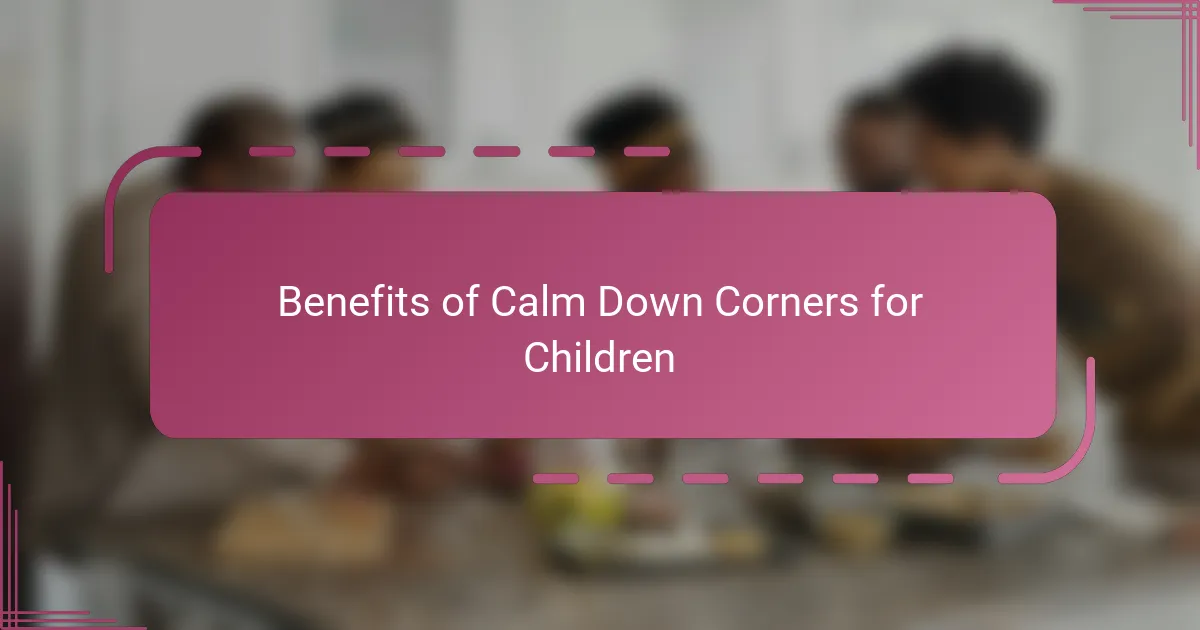
Benefits of Calm Down Corners for Children
One of the biggest benefits I’ve seen is how calm down corners help children build emotional awareness. When my child started using the corner regularly, they became better at naming their feelings instead of reacting impulsively. Have you noticed how simply putting emotions into words can reduce their intensity? That’s exactly what these spaces encourage.
Another thing I appreciate is the way calm down corners promote independence. Instead of me rushing in to fix every outburst, my child learned to self-soothe and take charge of their feelings. It felt like giving them a tiny dose of confidence and control, which, in my opinion, is priceless for their growth.
Calm down corners also create a predictable, comforting routine during chaotic moments. Children thrive on consistency, and knowing there’s a designated spot to calm down brings a sense of safety. I still remember how my child’s tense little body would visibly relax just by stepping into the corner—it reminded me that sometimes, peace is just a few steps away.
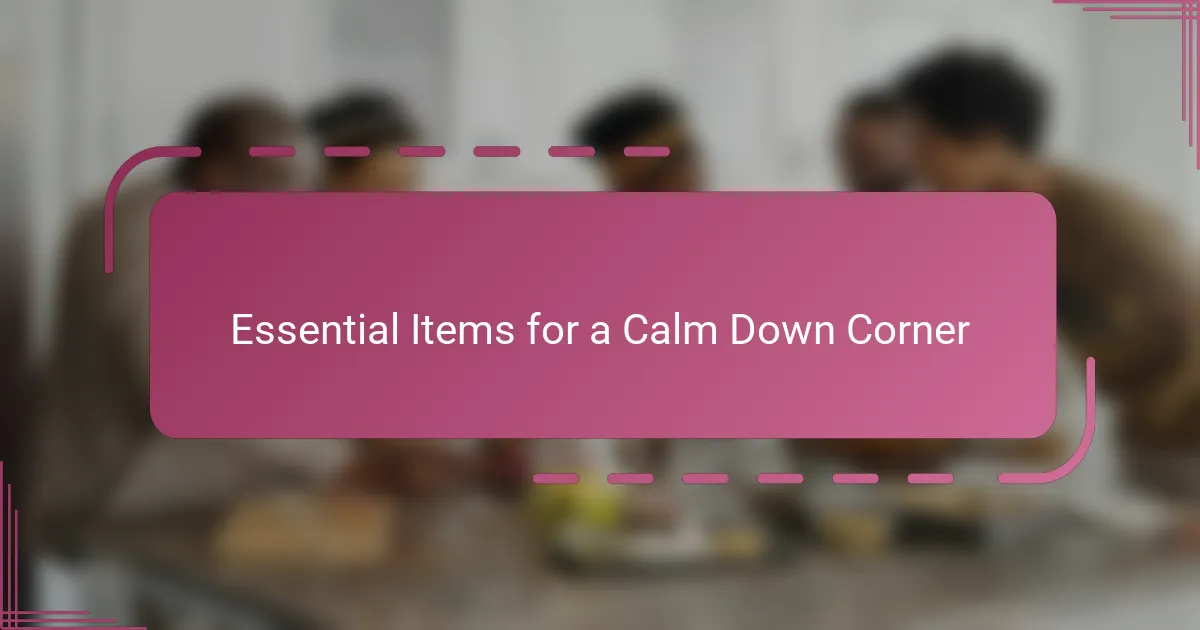
Essential Items for a Calm Down Corner
When I first gathered items for the calm down corner, I focused on including soft textures like a cozy cushion or a plush blanket. These tactile comforts seemed to instantly invite my child to settle in. Isn’t it amazing how something as simple as a soft pillow can turn a space into a gentle refuge?
I also made sure to add a few calming tools, like a small sensory bottle and some picture cards that illustrate different emotions. Watching my child use these helped me realize how important it is to give kids simple, tangible ways to express and process their feelings. Have you ever seen a child’s face lighten when they find a quiet way to say, “I’m upset” without words?
Lastly, I included items that encourage deep breathing and mindfulness, such as a soft timer or a favorite stuffed animal to hug. These little details make the corner more than just a timeout spot—they transform it into a soothing reset button. From my experience, these essentials create a balanced space that feels both safe and nurturing.

Step by Step Creation Process
The first thing I did was choose the perfect spot—somewhere quiet but still within sight, so my child felt secure knowing I was nearby. Did you ever realize how the right location can make all the difference between a useful calm down corner and just another corner? For me, that balance was key to success.
Next came the fun part: selecting the items that would live in the corner. I picked things that felt inviting and comforting, like a soft cushion and some calming sensory toys. Watching my child’s face light up when they saw their cozy little nook come together reminded me how much thoughtfulness can translate into real emotional support.
Finally, I added a step-by-step visual guide with pictures showing simple calming techniques, so my child could independently use the corner even when I wasn’t around. Have you ever noticed how a clear, easy-to-follow routine can empower a child? It gave me peace of mind knowing they had a tool to manage big feelings all on their own.
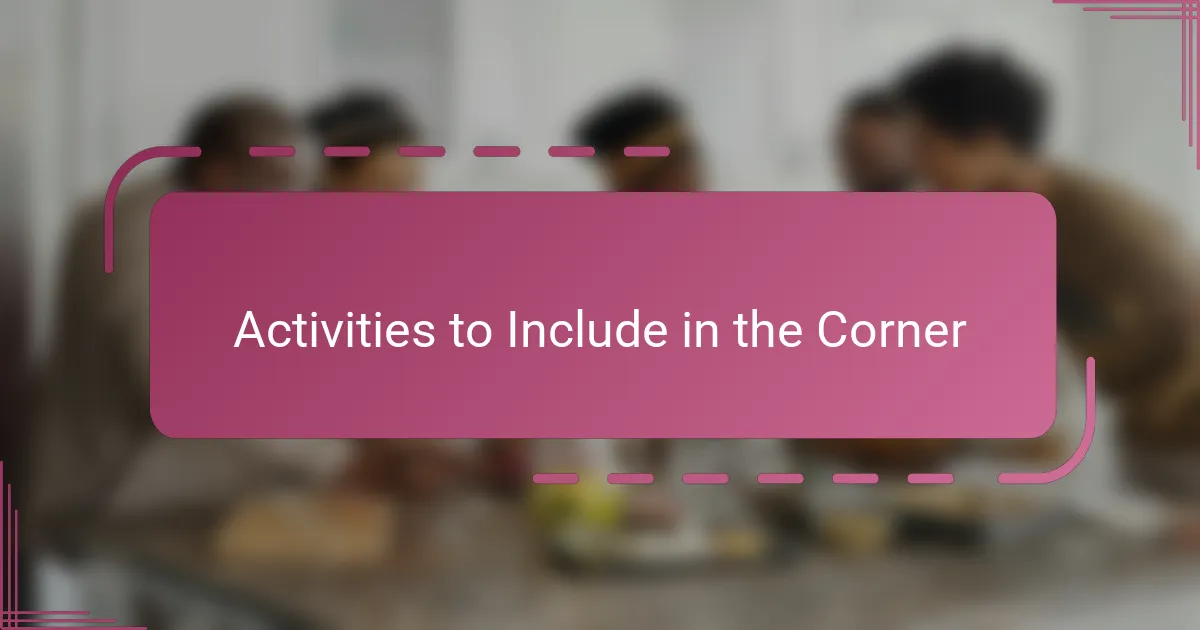
Activities to Include in the Corner
In my calm down corner, I included a few simple activities that encourage slow breathing, like blowing bubbles or using a pinwheel. These little exercises not only distract my child but also gently guide them toward a calmer state. Have you ever tried making a game out of deep breaths? It’s surprising how playful moments can become powerful calming tools.
I also added a small box with coloring supplies and emotion-themed coloring pages. Coloring felt like a quiet way for my child to express what they were feeling without needing to find the words. I noticed that after a few minutes of coloring, their mood often shifted, which made me appreciate how creative activities can serve as emotional outlets.
Another favorite activity involves using a feelings chart with movable pieces to help identify and name emotions. When my child points to a sad or angry face, it opens up a gentle conversation about what’s going on inside. Isn’t it amazing how just naming a feeling can take away some of its power? This simple step often helped us connect and work through tough moments together.
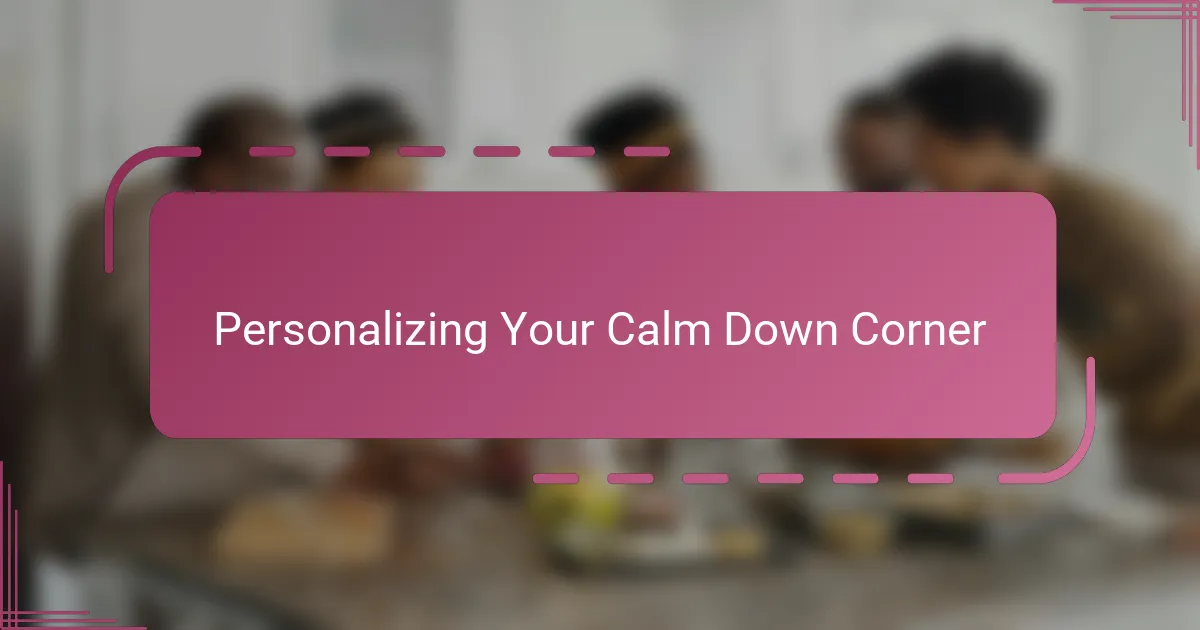
Personalizing Your Calm Down Corner
What made the calm down corner truly special for us was how I tailored it to my child’s unique personality. I remember adding their favorite stuffed animal and a few handpicked books because comfort, to them, came from familiar things. Doesn’t it make sense that a personalized space feels warmer and more inviting than something generic?
I also took time to involve my child in choosing colors and decorations. Seeing their excitement as they picked out a soft blue rug or a wall poster made me realize that ownership can deepen a child’s connection to the corner. Have you noticed how kids respond differently when they feel included in decisions that affect their emotional well-being?
Sometimes, personalization meant adapting the corner over time. When my child started showing interest in mindfulness music, I added a small, kid-friendly speaker. This flexibility made the space grow with them, transforming it from a simple retreat into an evolving sanctuary. Doesn’t that feel like a great way to honor their developing needs?


